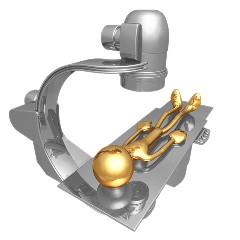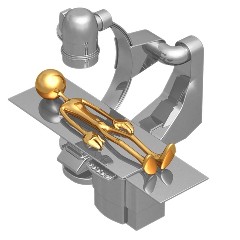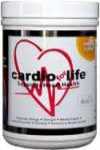|
What to Expect if You Require a
|
 Having A Coronary Angiogram |
You will be assisted to lie flat on your back with your head on a pillow and your hands usually tucked under your head to get your arms up out of the way. The bed does have a thin mattress for comfort.
Once you are centrally positioned on the table and comfortable, you will have the area on your body where the catheter will be inserted prepared by a Nurse or Cathlab Technician.
The most likely sites for catheter insertion are...
Alternatively....
Monitoring Your ECG During your Cardiac Catheterization
While the surgical site is being prepared, another technician will place some ECG electrodes...also known as ECG dots onto your chest. Three dots are usually sufficient for simple monitoring of your heart rhythm. The technician will clip some thin cables onto the dots. These cables are connected to an ECG machine. Your heart rhythm will be monitored throughout the Cardiac Catheterization procedure for your safety
You'll be the center of Attention in a Surgical and Sterile Zone
Following or during these preparation procedures you will be covered...from neck to toe with a blue or green surgical drape. The only part of your body showing will be your head
The area on top of the drape is called a sterile area and must not be touched by you...The Cardiologist, Technical and Nursing Staff will all be in surgical gowns with sterile gloves and possibly wearing hats and masks as a surgeon would. The wearing of hats and masks does vary from cathlab to cathlab though.
Other technical staff in the cathlab are not 'working' in what is called the sterile field so they will not be dressed in a surgical outfit to quite the same extent. Staff who haven't 'scrubbed in' will be available to come to your assistance if you should require anything...just ask.
Ok...what happens next?
 Coronary Angiography |
Now that access to your artery has been gained and secured, long catheters....they must be long enough to be threaded through your arterial system to reach your heart...can be advanced with the help of a flexible wire of similar length inside the catheter to stiffen the flexible plastic tube. The wire is removed when the catheter tip is near its target position.
When are Pictures of the Coronary Arteries Taken?
| X-ray Contrast Media Contrast media such as Omnipaque can sometimes cause side effects. These can include... Please alert the medical staff in the cathlab if you start to experience any unusual sensations. Drugs to counter any contrast media side effects can be given to you and may help prevent the worsening of any symptoms. The majority of people do not experience symptoms from the administration of contrast media but ignoring them if they occur can be dangerous as very rarely some people can experience very serious side effects to the drug. If you have any history of Asthma orAllergy or you have experienced symptoms in the past with contrast media your potential for a negative reaction during your procedure could be heightened. Please communicate any relevant medical history to the staff on admission to the clinic / hospital prior to your cardiac catheter exam. |
During your Cardiac Catheterization the process of your coronary arteries filling with contrast media will be recorded onto sophisticated hard disc recording media via the X-ray equipment for later analysis comprising of a written and diagrammatic report. This report will assist the health care professional in charge of your care in planning suitable treatment options for you if required.
Obtaining pictures of your hearts pumping chamber may also be
It is usually desirable during the course of a Cardiac Catheterization procedure to assess the function of the main pumping chamber of your heart…called the left ventricle. This assessment is carried out in a very similar way to coronary artery assessment. The only noticeable difference for you will be a hot flush sensation that will last for a few seconds...most people actually enjoy the way this feels.
The hot flush sensation is the result of injecting...through a catheter sitting in your pumping chamber...a larger volume of X-ray contrast media than was used for your Coronary Arteries. This fills the cavity of your left heart pumping chamber and allows medical staff to see it contracting and relaxing.
How well your pumping chamber is working will be fully evaluated and reported on in the same analysis as that of your coronary arteries
Obtaining a complete set of video sequences of your coronary arteries and your left ventricle will conclude the diagnostic Cardiac Catheterization.
What happens after medical staff have finished taking pictures?
Soon after the conclusion of Cardiac Catheterization Angiography you will be moved across from the examination bed onto a hospital bed or trolley and transported to an aftercare holding area where the small tube (sheath) in your groin or wrist will be removed and firm pressure applied to the spot for fifteen to twenty minutes...
...remember you have had a small incision made to an artery so proper care of the entry site is essential.
Some centers use internal clip or seal devices such as the Angio-Seal vascular closure device to 'pinch' off the small whole in the artery made by the needle and sheath. In this case, you won't need firm pressure to the site as the device takes care of this. These are only used in groin entry sites.
If you came in to the clinic / hospital just for the day...and nothing further needs to be done as a result of your Cardiac Catheterization Angiogram you will be able to go home in a few hours.
Click here to go from Cardiac Catheterization to Coronary Heart Health Home page
| Achieve Your Goal Fat loss Quickly Understand the No Gimmicks!
|
|
| Weight Control Hot Links |
| Make keeping healthy THE priority |





